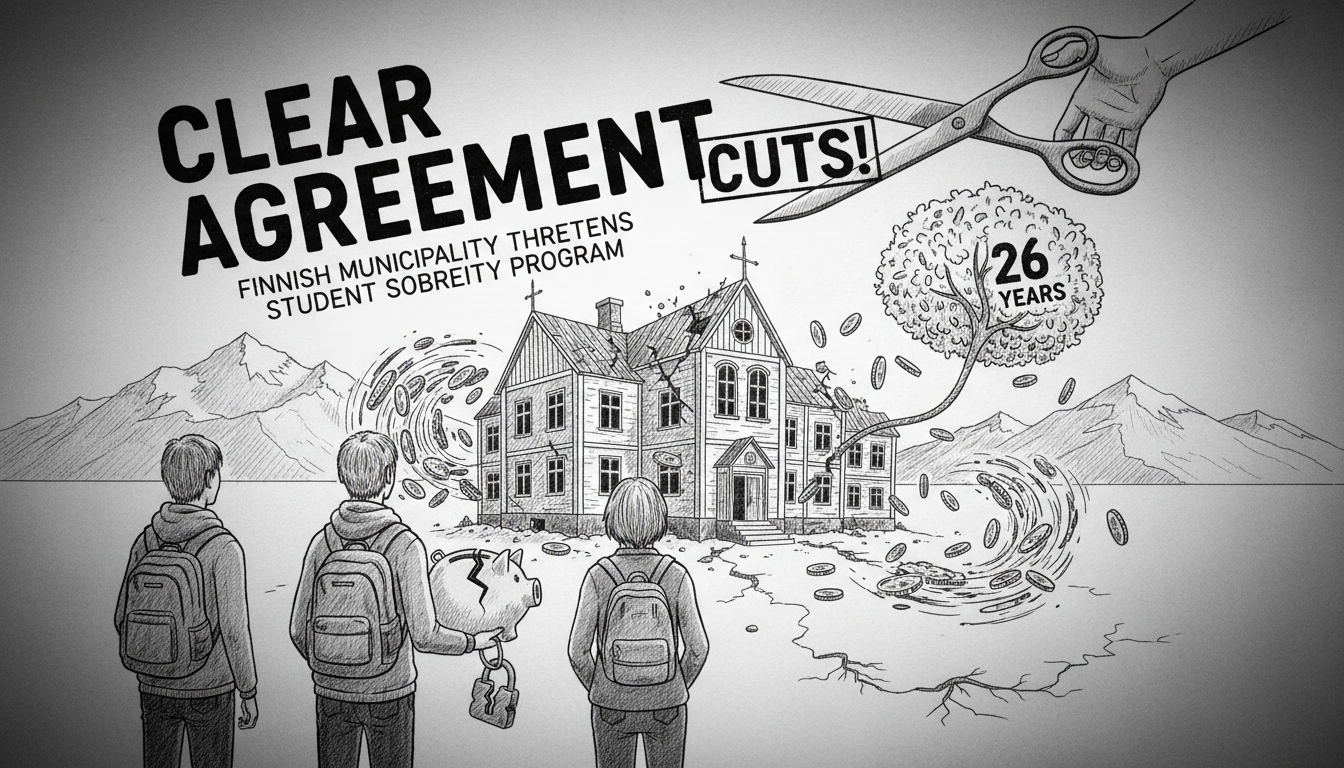Budget reductions in the Finnish municipality of Laukaa endanger a long-running school sobriety initiative. The Clear Agreement program operates in Vihtavuori and Leppävesi schools, serving students from grades 5 through 9. Participants commit to remaining substance-free until completing comprehensive school.
The program has continued for 26 years, becoming deeply embedded in school communities. It represents an exceptional approach to youth substance prevention across Finland. Program coordinator Ismo Jousmäki aims to continue operations through collaboration with parent associations despite funding challenges.
Municipal funding previously covered approximately 10,000 euros annually. This supported four weekly teaching hours for Jousmäki's work with students. After this academic year concludes, the municipality will no longer provide financial support for the initiative.
Jousmäki expressed disappointment about the budget measures. He stated he doesn't blame anyone personally, recognizing the municipality must save money wherever possible. His primary goal remains finding alternative ways to maintain the program's operations.
This situation reflects broader tensions in Finnish municipal financing. Many local governments face difficult choices between essential services and specialized programs. The potential loss of this long-standing prevention effort demonstrates how budget constraints can impact community health initiatives.
Finland's education system typically emphasizes student wellbeing alongside academic achievement. Substance prevention programs like Clear Agreement align with national educational values. Their potential discontinuation raises questions about maintaining comprehensive student support during economic challenges.
Similar programs exist throughout Nordic countries, where education systems prioritize holistic student development. The Nordic model often combines academic learning with life skills and health education. Budget cuts affecting such programs may indicate shifting priorities in municipal spending.
International readers might compare this to substance prevention efforts in their countries. Many nations struggle to fund comprehensive youth programs during economic uncertainty. The Finnish case illustrates how even established, successful initiatives face uncertainty when municipal budgets tighten.
The program's potential continuation through parent association collaboration shows community resilience. It demonstrates how local initiatives can adapt when formal funding structures change. This approach mirrors broader Nordic trends of community involvement in social services.
What happens next for the students who benefit from this program? Will other municipalities face similar decisions about specialized educational support? These questions remain unanswered as Laukaa implements its budget adjustments.
The situation highlights the delicate balance between fiscal responsibility and community investment. While understandable from a budgetary perspective, cutting prevention programs may incur higher social costs long-term. This represents a classic policy dilemma facing many local governments today.

